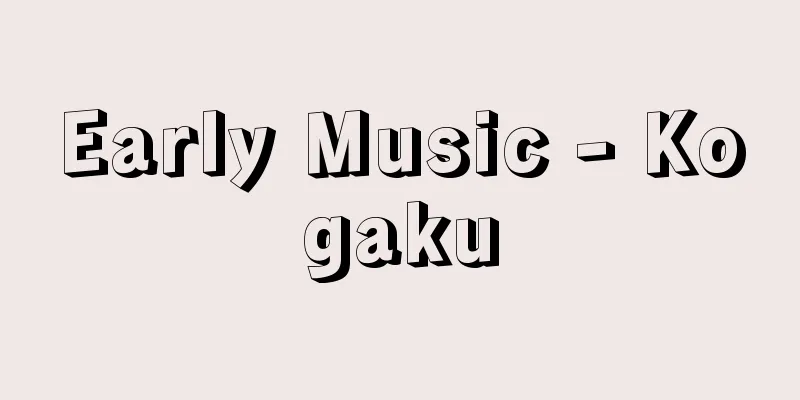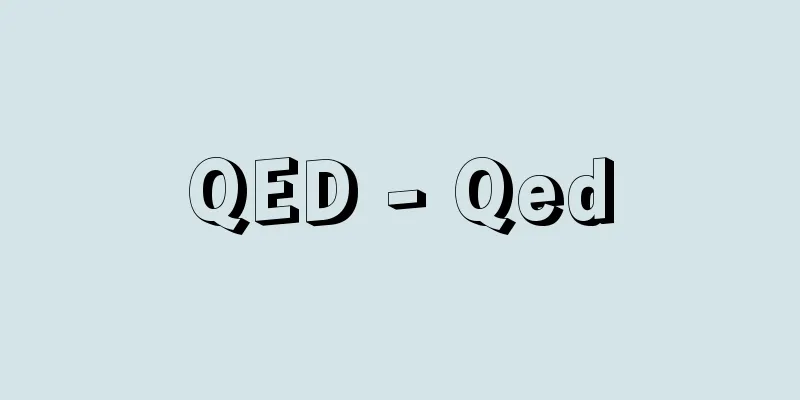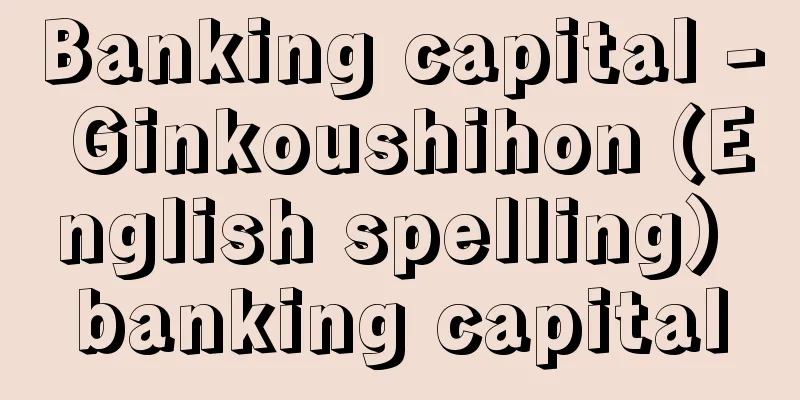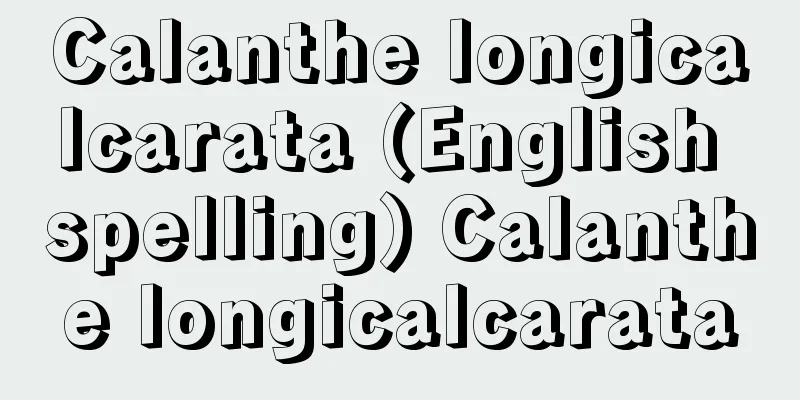Early Music - Kogaku

|
A musical term. (1) Generally, this term refers to Western music before the Baroque period. Early music. In recent years, it is often used in relation to original instruments. For example, "early music performance" refers to the reproduction of music using original instruments of the time, with respect to the characteristics of the instruments and the performance style of the time when the music was created, and with consideration of the standard sound of the time. The seeds of this approach can be seen in the British A. Dolmetsch (1858-1940), who began making restored instruments at the end of the 19th century, and the harpsichordist Landowska, who was active in the first half of the 20th century, but it became a major trend after World War II, when a trend called the "original instrument movement" was formed based in the Netherlands, Belgium, and the United Kingdom. Starting with the revision of the scores of JS Bach's works and a review of the performance style, research and performance activities have progressed back in history to music before the Renaissance. At first, it was seen as a trend of thought that was biased toward academic research, but since the 1970s it has been widely recognized by the music world and the general audience, and is now influencing the playing techniques of modern instrumentalists, orchestral arrangements, and performance styles. At the root of this trend is a questioning of a one-dimensional view of history of development that regards pre-modern instruments and music as inferior, as well as Western-centrism. Starting with Leonhardt, Harnoncourt, Brüggen, and Munro, many conductors, performers, and vocalists have emerged and continue to be active, including Bylsma, W. Kuijken (1938-), C. Hogwood (1941-2014), JE Gardiner (1943-), T. Koopman (1944-), and J. van Immerseel (1945-). → Viola da gamba/viol (2) A term indicating a type of gagaku music. This refers to the group of songs based on old musical styles among the Tang music repertoire. There are various theories about the classification of eras, and anything other than early music is called new music. → Related topics: I Musici Chamber Orchestra | Kirkpatrick | Strings (instruments) | Flute | Boccherini | Recorder | Lute Source : Heibonsha Encyclopedia About MyPedia Information |
|
音楽用語。(1)一般に,バロック期以前の西洋音楽をさす用語。early music。近年はオリジナル楽器とのかかわりで用いられる場合が多い。たとえば〈古楽演奏〉という場合,作品誕生時の楽器の特質やその演奏様式を重んじ,また当時の標準音も顧慮し,当時のオリジナル楽器によって再現される場合をさす。19世紀末に復元楽器の製作を始めた英国のA.ドルメッチ〔1858-1940〕,20世紀前半に活躍したハープシコード奏者ランドフスカなどにそうしたアプローチの萌芽が見られるが,大きな潮流となったのは第2次大戦後で,オランダ,ベルギー,英国などを拠点に〈オリジナル楽器運動〉と呼ばれる潮流が形成された。J.S.バッハ作品の楽譜校訂,演奏様式の見直しに始まり,歴史をさかのぼってルネサンス以前の音楽へと研究と演奏活動は進展。当初は学問的な考証に偏った一思潮とみなされがちだったが,1970年代以降,音楽界・聴衆全般に幅広く認知され,現在ではモダン楽器奏者の奏法,管弦楽の編成や演奏様式にも影響を与えている。この潮流の底には,近代以前の楽器や音楽を劣ったものとみなす一元的な発展史観,さらには西洋中心主義への問い直しがあるといえるだろう。レオンハルト,アルノンクール,ブリュッヘン,マンローらを先駆として,ビルスマ,W.クイケン〔1938-〕,C.ホグウッド〔1941-2014〕,J.E.ガーディナー〔1943-〕,T.コープマン〔1944-〕,J.vanインマゼール〔1945-〕ら数多くの指揮者・演奏家・声楽家が輩出し,活動を続けている。→ビオラ・ダ・ガンバ/ビオル(2)雅楽曲の種別を示す用語。唐楽の演目のうち古い音楽様式にもとづく曲群をさす。年代の区分には諸説があり,古楽以外を新楽という。 →関連項目イ・ムジチ室内合奏団|カークパトリック|弦(楽器)|フルート|ボッケリーニ|リコーダー|リュート 出典 株式会社平凡社百科事典マイペディアについて 情報 |
Recommend
Abuto Kannon - Abuto Kannon
...A port town in Fukuyama City, Hiroshima Prefec...
Alphabet - Alphabet (English spelling)
A writing system of Eastern Mediterranean origin,...
Rhynchotragus guentheri (English spelling) Rhynchotragusguentheri
...The young weigh 600g at birth and reach maturi...
Case-control study
… Representative methods of epidemiological resea...
Oonaobi no Mikoto
...In the Kojiki and one of the Nihon Shoki, this...
rift
… seachannel — A continuously sloping elongated d...
End of Period Inventory - Kimatanaoroshi
…Inventory is divided into physical inventory, wh...
"My Foolish Son - A Study of Flaubert" - My Foolish Son
...The reason he was seen as a representative int...
The Compleat Angler
An essay by British essayist Izaak Walton. First ...
Cropping season - Sakuki (English spelling)
This refers to the period during which crops are g...
Inaba Highway
A highway connecting the Harima region of Hyogo Pr...
Rail - rail (English spelling)
A steel strip with a special cross-sectional shap...
Llorona (English spelling)
A legendary woman found in Mexico, Spanish America...
Tsukushigaku - Tsukushigaku
〘Noun〙① Gagaku orchestral ensemble played at templ...
vis major
… [History] It is used in everyday language, but ...









